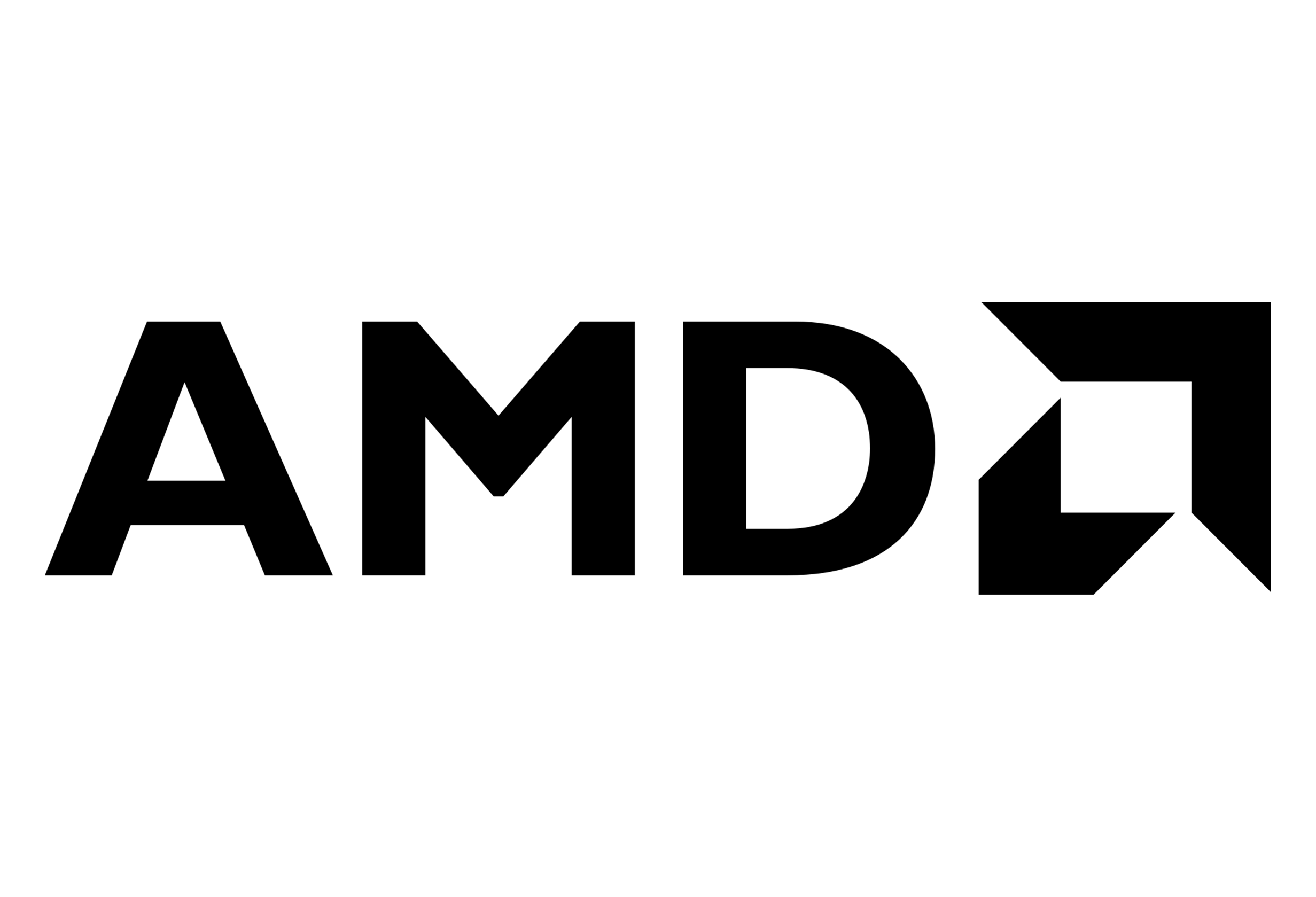– โดย AMD Instinct™ MI100 Accelerators จะปฎิวัตการประมวลผลประสิทธิภาพสูง (HPC) และด้านปัญญาประดิษฐ์ (AI) ด้วยเทคโนโลยีระดับแนวหน้าของอุตสาหกรรมด้านประสิทธิภาพการประมวลผล –
– กราฟิกการ์ดตัวแรกที่มาพร้อมสถาปัตยกรรมการออกแบบใหม่ “AMD CDNA” สำหรับยุคการประมวลผลระดับ Exascale –
กรุงเทพฯ, ประเทศไทย – 18 พฤศจิกายน 2563 – AMD (NASDAQ: AMD) เปิดตัวผลิตภัณฑ์กราฟิกการ์ดใหม่ AMD Instinct™ MI100 ที่มีประสิทธิภาพการประมวลผลเร็วที่สุดในโลก สำหรับงานด้านการประมวลผลประสิทธิภาพสูง และเป็นกราฟิกการ์ด x86 ตัวแรกของโลกสำหรับเซิร์ฟเวอร์ ที่ก้าวข้ามขีดจำกัดประสิทธิภาพการประมวลผล 10 teraflops (FP64)[1] พร้อมการสนับสนุนจาก Dell, Gigabyte, HPE และ Supermicro ผลิตภัณฑ์กราฟิกการ์ด AMD Instinct™ MI100 ได้ผสมผสานเข้ากับผลิตภัณฑ์โปรเซสเซอร์ AMD EPYCTM และแพลตฟอร์มซอฟต์แวร์ระบบเปิด ROCm™ 4.0 ที่ออกแบบมาเพื่อส่งเสริมประสิทธิภาพด้านการค้นคว้าสิ่งใหม่ ๆ ในยุคการประมวลผลระดับ Exascale
กราฟิกการ์ด AMD Instinct™ MI100 สร้างขึ้นบนสถาปัตยกรรมใหม่ AMD CDNA เมื่อจับคู่การทำงานกับโปรเซสเซอร์ 2nd Gen AMD EPYC ช่วยยกระดับระบบการประมวลผลของงานด้าน HPC และ AI ผลิตภัณฑ์กราฟิกการ์ด AMD Instinct™ MI100 นำเสนอประสิทธิภาพการประมวลผลแบบ FP64 สำหรับงานด้าน HPC ได้สูงสุดถึง 11.5 TFLOPS และประสิทธิภาพการประมวลผลแบบ FP32 Matrix สำหรับเวิร์คโหลดด้าน AI และแมชชีนเลิร์นนิ่ง[2] ได้สูงสุดถึง 46.1 TFLOPS เทคโนโลยีใหม่ AMD Matrix Core ทำให้กราฟิกการ์ด AMD Instinct™ MI100 สามารถส่งมอบประสิทธิภาพการประมวลผลสูงสุดแบบ FP16 ในระบบแทนจำนวนแบบ Floating-point เพิ่มขึ้นเกือบ 7 เท่า ในเวิร์คโหลดงานด้านการฝึกอบรม AI เมื่อนำไปเปรียบเทียบกับกราฟิกการ์ดรุ่นก่อนหน้าของ AMD[3]
นายแบรด แมคเครดี้ (Brad McCredie) รองประธานฝ่าย Datacentre GPU และ Accelerated Processing บริษัท AMD กล่าวว่า “วันนี้ AMD ได้ก้าวไปข้างหน้าอย่างยิ่งใหญ่ด้วยเทคโนโลยีการประมวลผลระดับ Exascale จากการที่เราเปิดตัวผลิตภัณฑ์กราฟิกการ์ด AMD Instinct MI100 กราฟิกการ์ดสำหรับการประมวลผลประสิทธิภาพสูงที่เร็วที่สุดในโลก โดยมุ่งเน้นไปที่เรื่องของเวิร์คโหลดงานด้านการประมวลผลทางวิทยาศาสตร์ ด้วยกราฟิกการ์ดรุ่นล่าสุดของเราผนวกรวมเข้ากับแพลตฟอร์มซอฟต์แวร์ระบบเปิด AMD ROCm ซึ่งออกแบบมาเพื่อให้นักวิทยาศาสตร์และนักวิจัยมีปัจจัยพื้นฐานที่ยอดเยี่ยม”
แพลตฟอร์มซอฟต์แวรระบบเปิดสำหรับยุคการประมวลผลระดับ Exascale
ซอฟต์แวร์ AMD ROCm สำหรับนักพัฒนานำเสนอรากฐานในการประมวลผลระดับ Exascales เป็นเครื่องมือสำหรับงานด้านโอเพ่นซอร์สที่ประกอบด้วย คอมไพเลอร์ (compilers), การเขียนโปรแกรมแบบ APIs (programming APIs) และไลบรารี (libraries) โดยนักพัฒนาซอฟต์แวร์ที่ต้องการการประมวลผลระดับ Exascale จะนำ AMD ROCm มาสร้างสรรค์แอปพลิเคชั่นประสิทธิภาพสูง ทั้งนี้ ROCm 4.0 ได้รับการปรับให้เหมาะสมกับการใช้งาน เพื่อส่งมอบประสิทธิภาพที่เหมาะสมสำหรับผู้ใช้กราฟิกการ์ด MI100 โดยซอฟต์แวร์ AMD ROCm 4.0 จะทำการอัพเกรดคอมไพเลอร์เป็นโอเพ่นซอร์สและผนวกเข้าไว้ด้วยกันเพื่อรองรับงานรูปแบบ OpenMP® 5.0 และ HIP อีกทั้งเฟรมเวิร์ค PyTorch และ Tensorflow ที่มีการปรับให้เหมาะสมกับซอฟต์แวร์ AMD ROCm 4.0 ทำให้สามารถบรรลุประสิทธิภาพการประมวลผลที่สูงขึ้นด้วยกราฟิกการ์ด AMD Instinct MI100[7],[8] โดย AMD ROCm 4.0 จะเป็นซอฟต์แวร์รุ่นล่าสุดสำหรับนักพัฒนาแอปพลิเคชั่นงานกลุ่ม HPC, ML และ AI ช่วยให้สามารถสร้างซอฟต์แวร์ประเภท Portable software ได้อย่างมีประสิทธิภาพ
นายบรอนสัน เมสเซอร์ (Bronson Messer) ผู้อำนวยการฝ่ายวิทยาศาสตร์ ของ Oak Ridge Leadership Computing Facility กล่าวว่า “เราได้รับสิทธิ์ในการทดลองใช้กราฟิกการ์ด AMD Instinct MI100 และผลลัพธ์เบื้องต้นเป็นที่น่าพอใจอย่างมาก จากประสิทธิภาพการประมวลผลที่เพิ่มขึ้นอย่างเห็นได้ชัดถึง 2-3 เท่า เมื่อนำไปเทียบกับกราฟิกการ์ดรุ่นอื่น ๆ สิ่งสำคัญที่ต้องตระหนักคือซอฟต์แวร์มีผลต่อประสิทธิภาพการประมวลผล ความจริงที่ว่าแพลตฟอร์มซอฟต์แวร์แบบเปิดอย่าง AMD ROCm และเครื่องมือสำหรับนักพัฒนางานรูปแบบ HIP นั้นเป็นโอเพนซอร์สและมีการทำงานบนแพลตฟอร์มที่หลากหลาย เป็นสิ่งที่เราคลุกคลีอยู่กับมันมาตลอดตั้งแต่เราวางระบบโปรเซสเซอร์/กราฟิกการ์ด รูปแบบไฮบริดเป็นครั้งแรก”
คุณสมบัติหลักของกราฟิกการ์ด AMD Instinct MI100 ประกอบด้วย:
- สถาปัตยกรรมใหม่ AMD CDNA – ออกแบบมาเพื่อเพิ่มประสิทธิภาพให้กับกราฟิกการ์ด AMD สำหรับยุคการประมวลผลระดับ Exascale และเป็นหัวใจสำคัญของกราฟิกการ์ด AMD Instinct MI100 ทั้งนี้สถาปัตยกรรม AMD CDNA จะนำเสนอประสิทธิภาพการประมวลผลและการใช้พลังงานที่ยอดเยี่ยม
- ประสิทธิภาพการประมวลผลโหมด FP64 และ FP32 ระดับชั้นนำสำหรับเวิร์คโหลดงาน HPC – ส่งมอบประสิทธิภาพการประมวลผลระดับชั้นนำของอุตสาหกรรมรูปแบบ FP64 สูงสุดถึง 5 TFLOPS และสูงสุดถึง 23.1 TFLOPS สำหรับประสิทธิภาพการประมวลผลรูปแบบ FP32 ช่วยให้นักวิทยาศาสตร์และนักวิจัยทั่วโลกค้นคว้าสิ่งใหม่ ๆ ในอุตสาหกรรมต่าง ๆ เช่น ชีววิทยาศาสตร์, พลังงาน, การเงิน, วิชาการ, รัฐบาล, การป้องกัน และอื่น ๆ อีกมากมาย[1]
- เทคโนโลยีใหม่ Martix Core สำหรับงานด้าน HPC และ AI – ประสิทธิภาพยอดเยี่ยมสำหรับการประมวลผล Matrix รูปแบบ full-range of single และ mixed precision เช่น FP32, FP16, bFloat16, Int8 และ Int4 ซึ่งได้รับการออกแบบมาเพื่อเพิ่มการผสานรวมของงานด้าน HPC และ AI
- เทคโนโลยี 2nd Gen AMD Infinity Fabric – กราฟิกการ์ด AMD Instinct MI100 ให้แบนด์วิดท์ I/O แบบ peer-to-peer (P2P) สูงสุดถึง 2 เท่า บนเทคโนโลยี PCIe® 4.0 พร้อมแบนด์วิดท์รวมสูงสุดถึง 340GB/s ต่อกราฟิกการ์ดหนึ่งตัว พร้อมด้วยเทคโนโลยี AMD Infinity Fabric™ Links[4] ซึ่งภายในเซิร์ฟเวอร์หนึ่งตัว กราฟิกการ์ด MI100 สามารถกำหนดค่าการเชื่อมต่อกราฟิกการ์ดจำนวน 4 ตัวได้ถึงสองแบบ แต่ละแบบจะมีแบนด์วิดท์แบบ P2P I/O สูงถึง 552 GB/s เพื่อการแชร์ข้อมูลที่รวดเร็ว[4]
- หน่วยความจำ HBM2 ที่รวดเร็วเป็นพิเศษ – มีหน่วยความจำแบบ HBM2 แบนด์วิดท์สูงขนาด 32GB อัตราสัญญาณนาฬิกา 2 GHz และให้แบนด์วิดท์หน่วยความจำประสิทธิภาพสูงขนาด 1.23TB/s เพื่อรองรับชุดข้อมูลขนาดใหญ่ และขจัดปัญหาคอขวดในด้านการย้ายข้อมูลเข้าและออกจากหน่วยความจำ[5]
- รองรับเทคโนโลยี PCIe® Gen 4.0 รุ่นล่าสุด – ออกแบบด้วยเทคโนโลยี PCIe Gen 4.0 รุ่นล่าสุด ให้แบนด์วิดท์การส่งข้อมูลจากโปรเซสเซอร์ไปกราฟิกการ์ดในทางทฤษฎีสูงสุดถึง 64GB/s[6]
ความพร้อมของโซลูชั่นเซิร์ฟเวอร์
คาดว่ากราฟิกการ์ด AMD Instinct MI100 จะพร้อมใช้งานภายในสิ้นปี 2020 จากเหล่าคู่ค้า OEM และ ODM ชั้นนำในกลุ่มตลาดระดับองค์กร รวมถึง:
Dell
นายราวี เพนดีคานที (Ravi Pendekanti) รองประธานอาวุโสฝ่าย PowerEdge Servers บริษัท Dell Technologies กล่าวว่า “เครื่องเซิร์ฟเวอร์ Dell EMC PowerEdge จะรองรับกราฟิกการ์ดใหม่ AMD Instinct MI100 ซึ่งจะช่วยให้สามารถประมวลผลข้อมูลเชิงลึกได้รวดเร็วยิ่งขึ้น ช่วยให้ลูกค้าของเราได้รับผลลัพธ์ของการประมวลผลด้าน HPC และ AI ที่ยอดเยี่ยม และมีประสิทธิภาพมากขึ้นอย่างเห็นได้ชัด AMD เป็นพันธมิตรที่ยอดเยี่ยมของเราในการสนับสนุนการพัฒนาด้านนวัตกรรมของดาต้าเซ็นเตอร์ ประสิทธิภาพระดับสูงที่ยอดเยี่ยมของกราฟิกการ์ด AMD Instinct นั้นเหมาะสมอย่างยิ่งสำหรับกลุ่มงานด้าน HPC และ AI บนเซิร์ฟเวอร์ PowerEdge ของเรา”
Gigabyte
นายอลัน เฉิน (Alan Chen) ผู้ช่วยรองประธานฝ่าย NCBU บริษัท GIGABYTE กล่าวว่า “เรารู้สึกยินดีอย่างยิ่งที่ได้ร่วมงานกับ AMD อีกครั้งในฐานะพันธมิตรเชิงกลยุทธ์ เพื่อนำเสนอฮาร์ดแวร์ให้กับลูกค้ากลุ่มเซิร์ฟเวอร์สำหรับงานด้านการประมวลผลประสิทธิภาพสูง กราฟิกการ์ด AMD Instinct MI100 แสดงให้เห็นถึงพัฒนาการอีกขั้นของเทคโนโลยีการประมวลผลประสิทธิภาพสูงสำหรับ ดาต้าเซ็นเตอร์ นำเสนอการเชื่อมต่อและข้อมูลแบนด์วิดท์ที่มากขึ้นสำหรับงานด้านการวิจัยพลังงาน พลวัตของโมเลกุล และการฝึกการเรียนรู้เชิงลึก การที่เราได้นำกราฟิกการ์ด AMD Instinct MI100 เข้ามาใช้ในเครื่องเซิร์ฟเวอร์ของ GIGABYTE จะทำให้ลูกค้าของเราได้รับประโยชน์จากประสิทธิภาพการประมวลผลที่ดียิ่งขึ้นในเวิร์คโหลดงานด้าน HPC ทางวิทยาศาสตร์และอุตสาหกรรมที่หลากหลาย”
Hewlett Packard Enterprise (HPE)
นายบิลล์ มาเนล (Bill Mannel) รองประธานและผู้จัดการทั่วไปฝ่าย HPC บริษัท HPC กล่าวว่า “ลูกค้าของเราใช้ระบบ HPE Apollo เพื่อใช้ความสามารถที่สร้างขึ้นตามวัตถุประสงค์ และต้องการประสิทธิภาพในการรับมือกับความซับซ้อนในด้านต่าง ๆ และเวิร์คโหลดงานที่ต้องใช้ข้อมูลจำนวนมากในการประมวลผลประสิทธิภาพสูง (HPC) การเรียนรู้เชิงลึก และการวิเคราะห์ จากการเปิดตัวระบบใหม่ HPE Apollo 6500 Gen 10 Plus เรากำลังพัฒนากลุ่มผลิตภัณฑ์ของเราเพื่อปรับปรุงประสิทธิภาพด้านเวิร์คโหลดผ่านกราฟิกการ์ด AMD Instinct MI100 ซึ่งจะช่วยให้สามารถเชื่อมต่อและประมวลผลข้อมูลได้ดียิ่งขึ้น โดยทำงานควบคู่ไปกับโปรเซสเซอร์ 2nd Gen AMD EPYC™ เราหวังว่าจะได้ร่วมมือกับทาง AMD ต่อไปเพื่อยกระดับข้อเสนอด้านการให้บริการของเราด้วยโปรเซสเซอร์และกราฟิกการ์ดรุ่นล่าสุดของ AMD”
Supermicro
นายวิค มาลยาลา (Vik Malyala) รองประธานอาวุโสฝ่าย Field Application Engineering และ Business Development บริษัท Supermicro กล่าวว่า “เรารู้สึกตื่นเต้นเป็นอย่างมากไปกับ AMD ด้วยผลิตภัณฑ์กราฟิกการ์ด AMD Instinct MI100 ที่นำเสนอประสิทธิภาพด้านการประมวลผลประสิทธิภาพสูงได้อย่างน่าประทับใจ ด้วยการผสมผสานกันของพลังในการประมวลผลกับสถาปัตยกรรมใหม่ AMD CDNA พร้อมด้วยหน่วยความจำประสิทธิภาพสูง และแบนด์วิดท์ของกราฟิกการ์ดแบบ peer-to-peer ที่กราฟิกการ์ด AMD Instinct MI100 นำเสนอมานั้น ลูกค้าของเราจะสามารถเข้าถึงโซลูชั่นที่ยอดเยี่ยม สามารถตอบสนองความต้องการด้านการประมวลผลที่รวดเร็วและเวิร์คโหลดที่สำคัญขององค์กร กราฟิกการ์ด AMD Instinct MI100 จะเป็นส่วนเสริมที่ยอดเยี่ยมสำหรับเซิร์ฟเวอร์ Multi-GPU ของเรา และระบบการให้บริการการประมวลผลประสิทธิภาพสูงและโซลูชั่นการสร้างเซิร์ฟเวอร์ของเรา”
MI100 Specifications

Supporting Resources
- Learn more about AMD Instinct™ Accelerators
- Learn more about AMD HPC Solutions
- AMD HPC Solutions Hub
- Learn more about AMD CDNA
- Learn more about the AMD 2nd Gen EPYC™ Processor
- Become a fan of AMD on Facebook
- Follow AMD on Twitter
